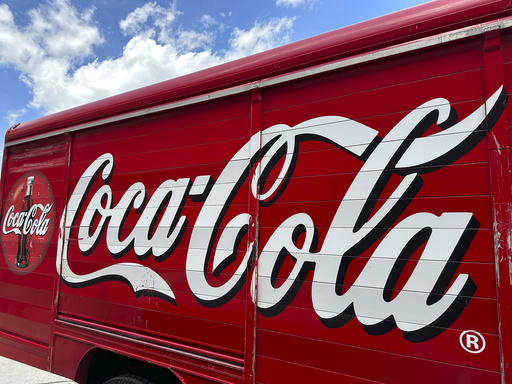Coca-Cola is raising its full-year sales guidance after a stronger-than-expected second quarter boosted by continued price increases.
The Atlanta beverage giant said Tuesday it now expects organic sales to grow between 9% and 10% this year, up from 8% to 9% previously. One standout was Coca-Cola Zero Sugar, which saw a 20% jump in global volume sales.
Revenue rose 3% to $12.4 billion for the April-June period. That was higher than Wall Street anticipated. Analysts polled by FactSet were expecting revenue of $11.8 billion.
Coke, which hiked prices 13% in the first quarter, raised them 9% in the April-June period. The company said that was partly due to hyperinflation in some markets, including Argentina and Nigeria. Coke has raised prices every quarter since the end of 2020.
Coca-Cola Chairman and CEO James Quincey defended the price hikes. In North America, where Coke’s prices rose 11%, about half of the increase was due to sales of more expensive beverages like Topo Chico mineral water and Fairlife milk, Quincey said. The other half was due to straight price hikes.
“We still have input costs that are going up, typically the agricultural ones rather than the metal or commodity-based ones, but in the end, our strategy remains,” Quincey said. “Yes, there’ll be cost inflation. Yes, we’ll look to put it through.”
But price increases appear to be hurting demand at home, where North American unit case volume sales fell 1%. Coke saw lower North American demand for water, sports drinks, sparkling sodas, coffee, tea and its trademark Coca-Cola beverages.
Quincey said the company saw some softness in away-from-home demand at places like restaurants and movie theaters. That’s been a trend since the second half of last year, he said.
“Really, it’s been kind of a slow softening rather than anything major and abrupt,” he said.
Consumer demand overall has been resilient, the CEO added, but “there’s a piece of the lower-income consumers who are either going out slightly less or when they do go out, they’re looking for greater value through combo meals.”
Quincey said Coke is working with restaurant partners to ensure beverages are included in their combos. For example, McDonald’s launched a $5 meal deal in late June that includes a small Coke beverage or other drink.
In the Asia Pacific region, where Coke lowered prices 3%, unit case volume sales rose 3%. Unit case volumes were up 5% in Latin America and flat in Europe, the Middle East and Africa.
Coca-Cola’s net income fell 5% to $2.4 billion, or 56 cents per share. Adjusted for one-time items, including currency fluctuations, Coke earned 84 cents per share. That also beat Wall Street’s forecast of 81 cents.
Shares of The Coca-Cola Co. rose less than 1% in morning trading.
Coke’s results were a contrast with rival PepsiCo, which tightened its full-year organic revenue guidance earlier this month after posting weaker-than-expected revenue in the second quarter. But unlike Coke, PepsiCo sells snack foods like Frito-Lay chips. Demand for those products has begun to fall after several years of price increases.



